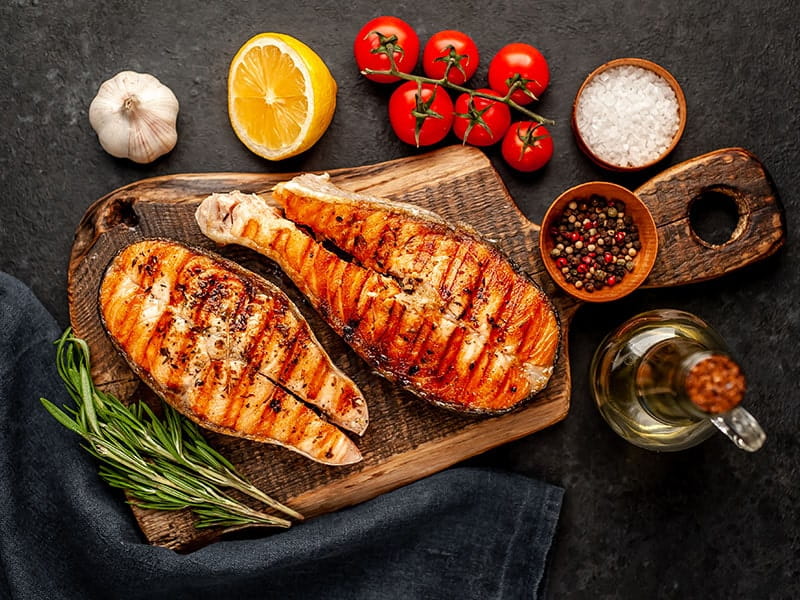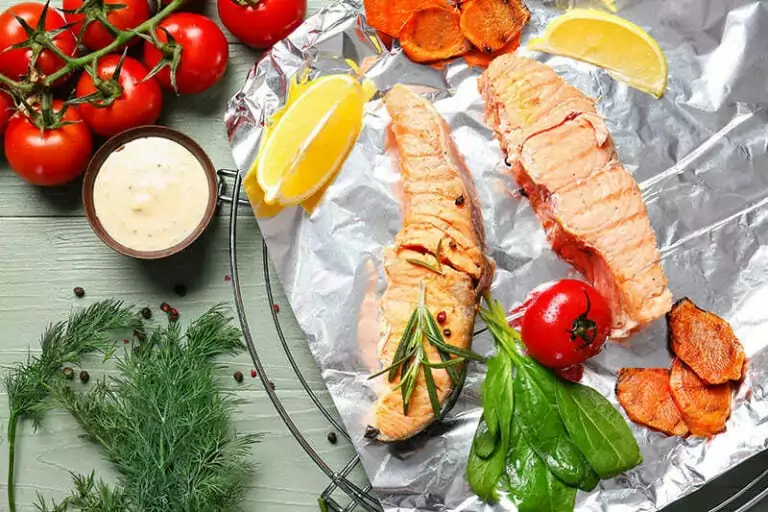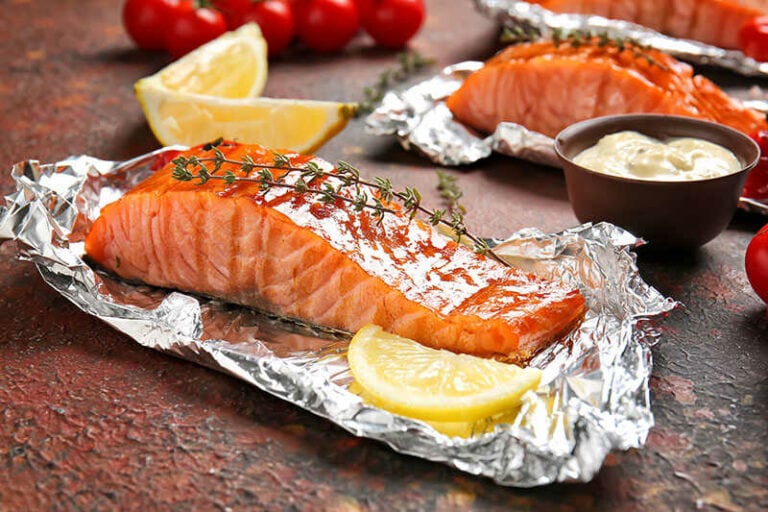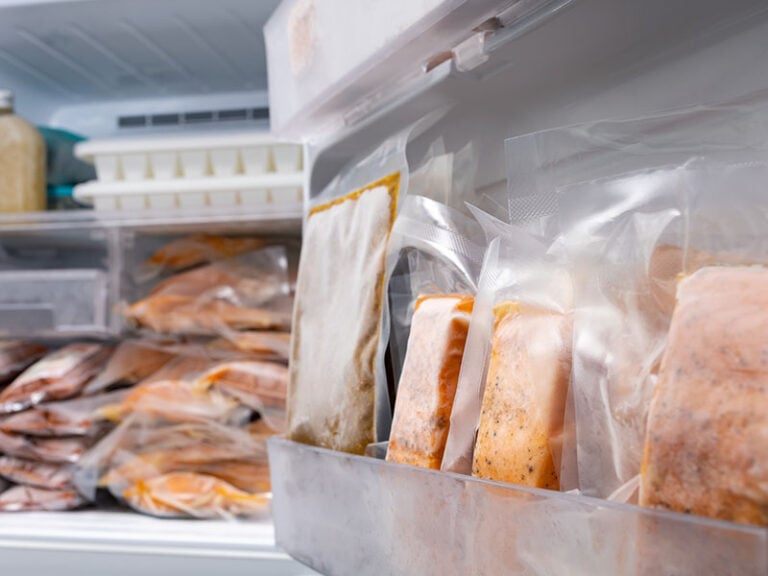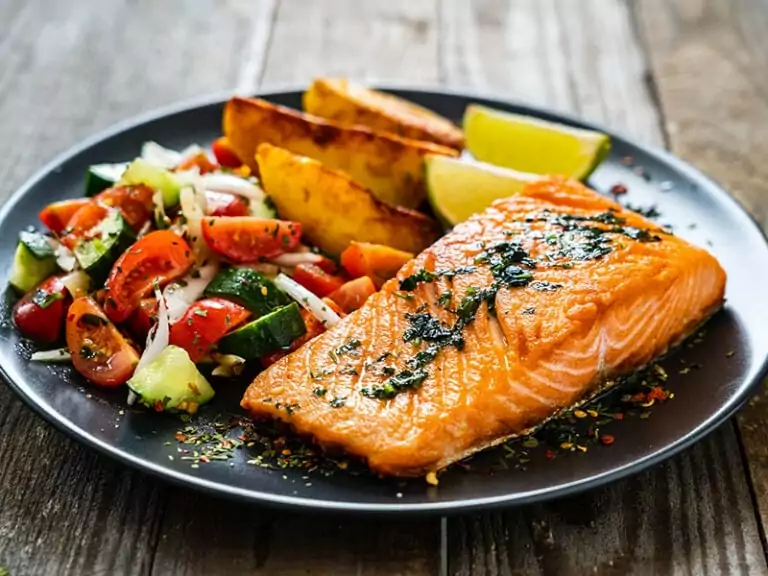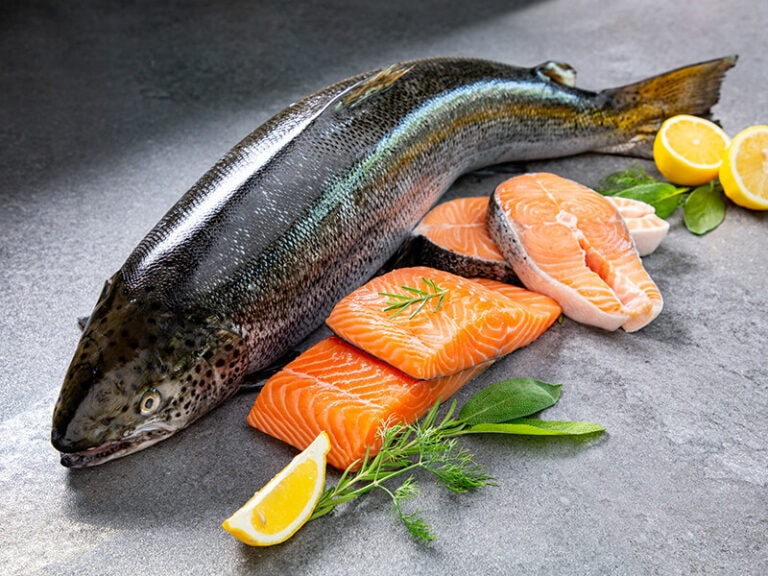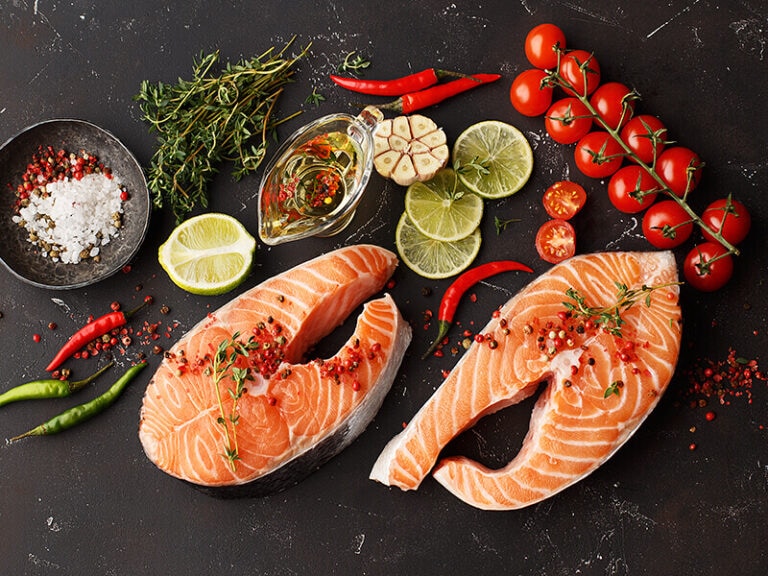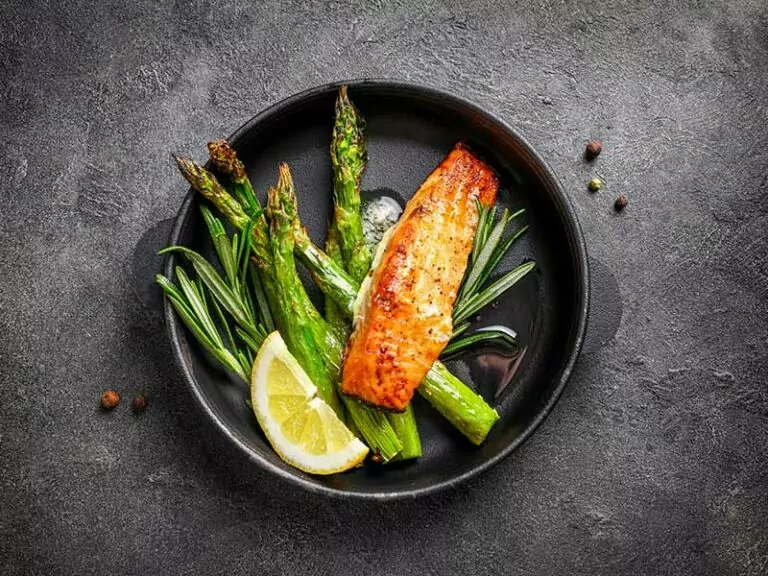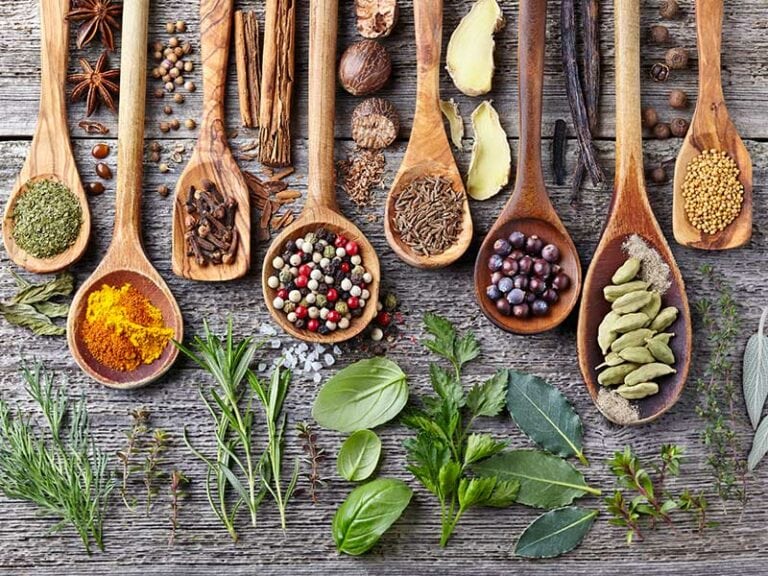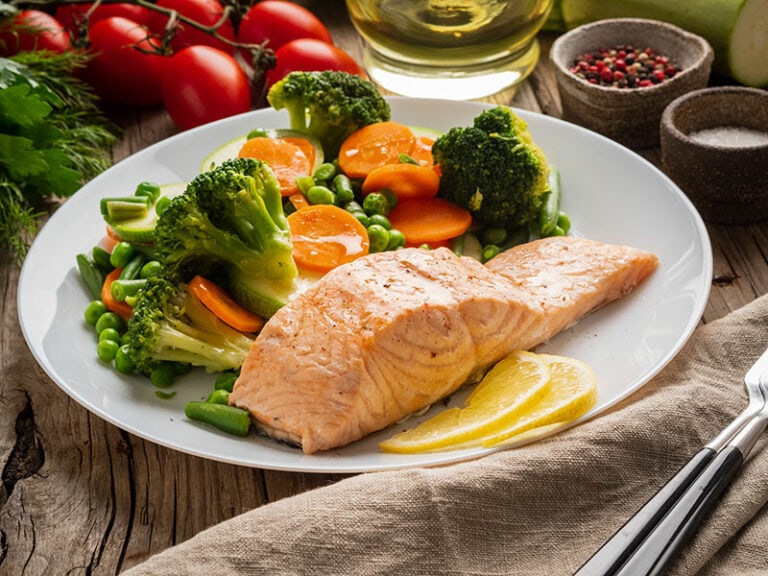Whether you are throwing a party or just preparing a meal, I bet there is still some cooked salmon leftover, and you might be curious how long your cooked salmon lasts in the fridge. So how long is enough, and is it still good to eat after that?
Salmon is used in a variety of recipes that are not only delicious but also beneficial to human health. That’s why knowing how to store them in the fridge with appropriate timing is crucial to ensure that they maintain all of their nutritional value and delicious flavor.
Wait no longer. Here is the in-depth information in terms of salmon and the proper storage that not everyone has known. Let’s stay tuned.
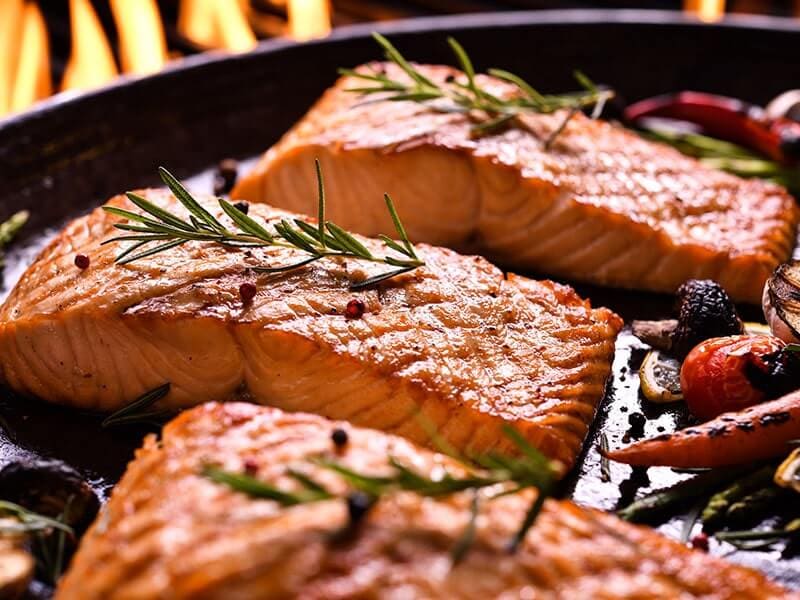
So, How Long Can Cooked Salmon Last In The Fridge and Why?
Your cooked salmon (or fish in general) can be safe in the fridge for up to 4 days. Take a look at the table below for more information regarding storing salmon timing in various ways.
According to the Food Storage for Safety and Quality research of The University of Georgia Cooperative Extension, you can keep cooked salmon in the refrigerator for up to 4 days for safe consumption (1).
The reason for this is because the cool temperature of the fridge can only slow down the growth of bacteria, not entirely halt them. Therefore, any remaining fish should be eaten within 4 days.
However, some famous chefs have stated that the best time to keep cooked salmon in the fridge is up to 3 days, depending on the quality of the fish. The fresher the salmon, the longer you can keep it refrigerated, but 3 days is still a good bet.
In case your leftover cooked salmon is from the restaurant, as you cannot determine how fresh they were before cooking, it is highly recommended to consume them within 2 days.
Canned salmon, on the other hand, can last longer in the fridge. Unopened canned salmon can be refrigerated safely in the next 6 to 8 months. However, opened canned salmon that is stored in the fridge should be used within 3 to 4 days, similarly to cooked salmon.
What about smoked salmon? Can smoked salmon be considered cooked? Is its shelf-life the same as cooked salmon? While the answer is slightly complicated, the long story short is that its shelf-life inthe fridge is based on the packaged condition. Once opened, standard smoked salmon last 5-7 days in the fridge.
Apparently, unopened packages of smoked salmon can last longer than opened ones in the fridge. The best choice is to stick to the expiration date on the packaging. But you can add another 2 to 3 days after that and it is still safe to consume.
In short, regardless of the conditions and storing of your cooked salmon, it would be much better and safer to consume your leftovers as soon as possible.
Important Notes For Storing Salmon At Room Temperature
Cooked salmon should never be left out at room temperature for more than 2 hours. Because at this point, bacteria and germs are growing on the fish, your meal is now unsafe to eat.
2 hours is just the rule of thumb for leaving your fish at room temperature. It also depends on other factors, like the weather and climate of your living. Cooked salmon should not be left out in a warm environment for more than 1 hour, so eat your fish as soon as possible.
What if you’re not sure your salmon is cooked? Fortunately, there are plenty of signs indicating that salmon is cooked. Depending on these signs, you can determine the course of action you need to preserve your salmon’s quality and freshness.
Can Cooked Salmon Last Longer If Storing Them In The Freezer?
Yes, of course. The main advantage of storing food in the freezer is to extend cooked salmon’s shelf life for longer.
If you freeze them correctly, 2 to 3 months is ideal for you to have the finest quality. However, it is still acceptable to consume after 6 to 9 months; however, you can expect some changes in texture and flavor since it will not be as nice as the first time, but it is still safe to eat.
Plus, ensure the temperature in your freezer is always at 0 F degrees. And do not forget to thaw them before serving.
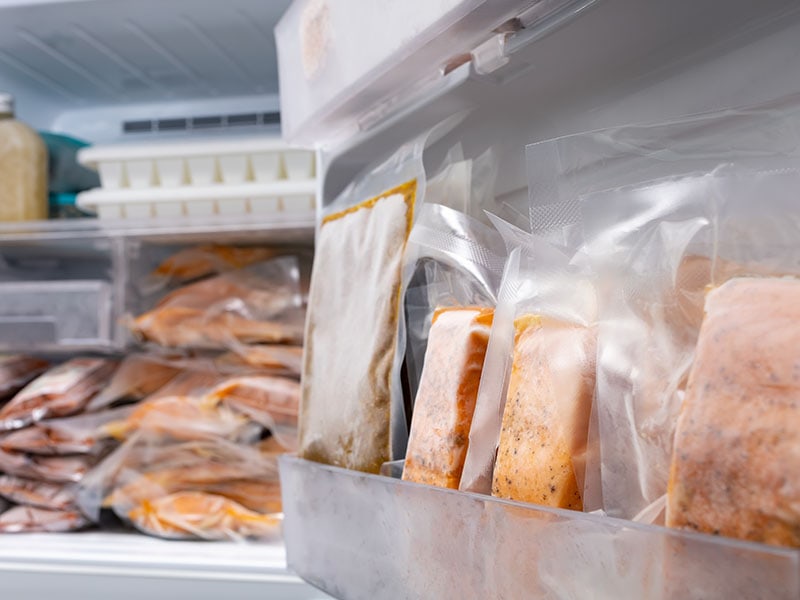
What To Know About Thawing Cooked Salmon
You only thaw your frozen cooked salmon once you want to eat them again. Your thawed fish can stay well in the fridge for additional 2 to 3 days.
Allow them to thaw in the fridge overnight, then reheat them by microwave or on the stove. Keep in mind, never put your thawed cooked salmon back in the freezer to freeze them again.
Thawed cooked salmon tastes best when it’s cooked with other ingredients. I suggest whipping up some dishes using the leftover fish. This will ensure that the salmon will not be overcooked when combined with other ingredients and processed over high heat.
Essential Guide To Store Cooked Salmon
I will introduce to you the step-by-step guidance of how to store cooked salmon in 2 different ways that you might not know.
Method 1: Storing In The Fridge
This one is the most common way to preserve cooked salmon. However, I want you to know that it should be properly stored like the 3 steps below.
Step 1: Make Sure Your Cooked Salmon Has Cool Off
It would be best if you do not put a hot salmon fillet in the fridge right after they are cooked. First, you will jeopardize the other foods that are already inside the fridge due to the salmon’s heat. Second, it is also not good for your fridge in the long run.
As mentioned above, a maximum of 2 hours is the time to allow cooked fish to sit out and 1 hour or less for hot weather.
Step 2: Use Storage Tools to Store Them
Airtight bags or containers are perfect for storing cooked fish. If you do not have them on hand, using foil to wrap them in is still acceptable.
Remember to seal the top/lid carefully so the air cannot get in or get out. For aluminum foil, thoroughly wrap your salmon with it.
Step 3: Label It
If you have an excellent memory, you might skip this step. But somehow you feel like you are Dory in Finding Nemo, then it will cost nothing to write down the date that you put your cooked salmon in the fridge.
Based on that, you can estimate the time that you consume them at their finest.
Method 2: Storing In The Freezer
Here is another way to store your cooked salmon for any longer. A freezer can keep your food safe for at least 2 months.
Step 1: Cut Your Cooked Into Smaller Portion
You can pass this step if they are already small. You’d better use a sharp knife to keep the nice shape for your cooked salmon. If it’s too blunt, a high-quality honing steel will restore the knife to its glory days. Also, remember to let them cool off before storing them in the freezer.
Step 2: Use Freezer Bags
One important thing to note in this step is that you should wrap your cooked salmon with parchment paper or foil before putting them inside a freezer bag.
If you use parchment paper, ensure it is high quality and will not absorb the liquid of the salmon. The reason to use parchment or foil is to keep your frozen salmon from adhering to the bag when they are frozen.
Do not forget to remove the excess air inside a freezer bag and tightly seal it.
Step 3: Label It
Like the fridge method, you should label the date and the title on your freezer bag before placing your cooked salmon in the freezer.
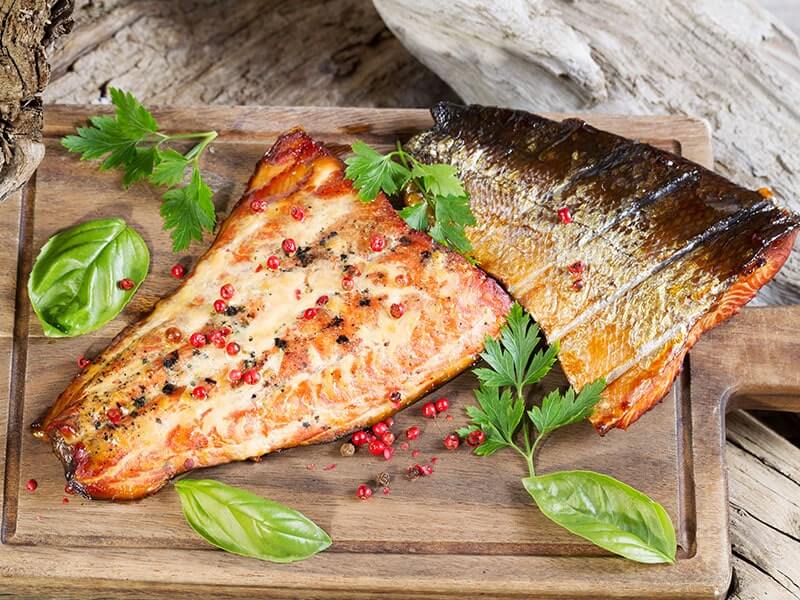
4 Easy Ways To Tell Your Cooked Salmon Are Spoiled
Smell, Sight, Touch, and Taste are the 4 basic senses that people use to assess whether or not grilled salmon is safe to consume. With the detailed and useful information below, I hope you will not consume any spoiled salmon by accident.
Using Your Nose To Smell
Spoiled salmon can be easily spotted when you smell them. Bad cooked fish has strong fishy, unpleasant, or ammonia smells that make you feel sick right after one sniff. So, once you smell something weird, just throw them away.
Using Your Eyes To See
Bad salmon will be discolored. And if you spot any black, grey, or dark marks, do not ever eat them.
Using Your Hands To Touch
By touching them, you can also determine if it is still good or not. Spoiled cooked salmon have a slimy texture, thereby causing a sticky feeling when you touch them.
And if you see them less thick or less flaky compared to the first time you cooked them, it is more likely to be spoiled.
Use Your Mouth To Taste
If you suspect that your salmon is spoiled, and there’s no obvious weird smell, strange texture, or color, you can try a tiny bite as a last resort. Is the salmon’s flavor too strange and off-putting? In that case, it’s time to throw away the salmon, it’s beyond salvageable.
How To Choose High-quality Fresh Salmon
As I mentioned, choosing the best salmon is essential in order to have the greatest period for salmon preservation in the fridge (or freezer). So there are 3 features that you should pay attention to if you want high-quality salmon fillets.
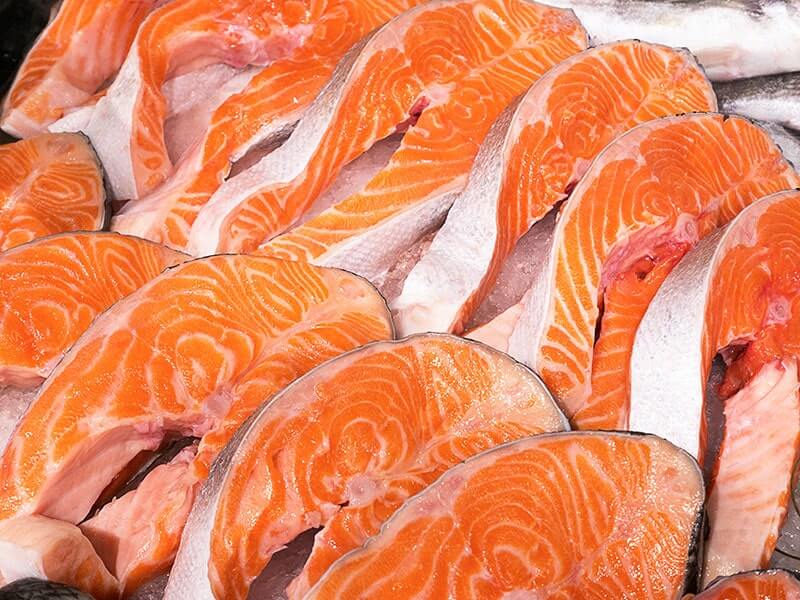
Salmon Appearance
If the muscle of your fish has fractures in it, do not buy it since it is an indication of mishandling and rotting.
For selecting salmon in non-vacuum packaging, avoid the package with water collecting inside.
Only choose salmon with the bright and fresh pink or orange color.
Salmon Smell
If you buy fresh salmon without packaging from your local market, sniff them first to make sure they have a fresh, clean sea smell. Avoid those too-fishy smells, strong odors, or sour.
Salmon Texture
Feel their texture by touching them. When you softly push the salmon meat, it should bounce back if they are fresh and good quality.
Keep in mind that you should not buy any salmon fillet you find quite sticky or too soft.
For Choosing Frozen Salmon
You should avoid the frozen salmon in torn or crushed packaging as it is more likely that your frozen fish has been attacked by bacteria outside.
If you see any frost on the interior of the packaging, it means your fish has been stored for a long period. Also, do not forget to check the salmon’s appearance.
The answer to how to choose the perfect salmon is here.
Cooking Salmon Cannot Get Easier With 8 Methods
In order to enjoy your salmon fillet best, you’d better learn how to cook them in various ways. Here is a brief description of 8 quick and easy methods to prepare the most delectable salmon dinner.
1. Pan-Fried Salmon
Starting with the quickest and easiest way to cook salmon – pan-frying. I guarantee that every one of you can do it, even the beginners.
Lay your seasoned fish fillets in a heated pan with a bit of oil (or butter) and cook for 5 to 6 minutes, then turn the fillet side with the skin over and cook for an additional 3 minutes until the skin turns crispy golden color. The salmon fillet is now ready to eat.
A simple and entertaining example of pan-frying salmon. Watch this video to know more:
2. Roasted Salmon
If you have an oven at home, try roasting them in the oven. This way is also more preferable to cook a large salmon portion or for a big group as you can cook more than 1 fillet at once. And you do not have to flip them over as the above method.
Set the oven temperature at 425F degrees to preheat. You can season your salmon with salt and pepper or with herbs before roasting them in the oven. It might take around 8 to 15 minutes to roast, depending on the thickness of your salmon.
3. Broiled Salmon
The oven is also used for broiling in this cooking method. Similarly, season them with spices and place them on a sheet pan before broiling your salmon for 3 minutes in the oven.
After 3 minutes, check the fish’s doneness. If you want a well-done salmon fillet, you may switch off the oven and leave them in there for a bit longer.
4. Grilled Salmon
It is a perfect recipe for your BBQ party – grilled salmon. This cooking method is super simple as well. And if you are a fan of smoky-flavor food, then do not pass this one.
Do not forget to brush your salmon with oil before grilling; otherwise, the fish might stick to the grill. Flip them after 5 minutes until you see both sides are good to go.
5. Poached Salmon
If you are concerned about the fat level of salmon, try this method of preparation. Plus, they can be cooked in a pot, pan, or deep skillet.
First, in around 10 minutes, you can add any flavorings or herbs to the boiling liquid. The liquid might be chicken broth or plain water, but it must cover the salmon fillet completely.
Depending on the thickness of the fish, drop your fish in a pot and cook for 5 to 6 minutes. You now have a fat-free salmon fillet on your hands.
6. Pan-Seared Salmon
Here is another fast cooking method for salmon. Similarly, you can season them before or during the cooking process.
Now, simply brush oil on your fillet, then put them on the skillet at high-medium heat for 3 to 4 minutes and turn them over in another 3 to 4 minutes until you see the golden crust.
7. Salmon en Papillote
It just simply means “wrapped up in parchment” in French. All you have to do is follow these simple instructions. After seasoning them, place your fish on parchment. You can add veggies alongside your fillet to bake.
Wrap them in the parchment paper. Then, estimate the required time to cook salmon at 400F. For this specific recipe, I’d say that you need around 12 to 15 minutes. However, the timing may change based on the vegetable you add in and the thickness of your filet.
8. Baked Salmon With Foil
Similar to the parchment technique, now you use foil instead. In reality, many people love this method because it can retain the moisture for your fillet very well.
With this method, you can also add any season that you want. Do not forget to brush oil or butter on the bottom of the foil so that your fish will not stick with the foil. And after around 15 to 20 minutes, you will have a very succulent piece of salmon.
Baking salmon with foil cannot get easier, right? The video below should be able to help you:
FAQs
There are also some frequent questions that I know many of you are concerned about regarding cooked salmon and salmon in general. Let’s see what it is.
Salmon Storage Is So Important
No one wants to get sick after eating something, especially salmon, because they are high-priced fish. Therefore, you should save for yourself these tips to store them properly in your kitchen for longer shelf life and the most important, keep a healthy stomach.
Overall, it is not too difficult to remember the time frame for storing cooked salmon and the methods to keep them. But if you want to share this helpful information, please click like and share it with your beloved ones so everyone can have healthy eating habits like yours. Enjoy!
Nutrition Facts
1 servings per container
Serving Size4 oz (113g)
- Amount Per ServingCalories234
- % Daily Value *
- Total Fat
14g
22%
- Saturated Fat 2.7g 10%
- Cholesterol 71mg 24%
- Sodium 69mg 3%
- Potassium 435mg 13%
- Protein 25g 50%
- Vitamin A 5.2%
- Vitamin C 7%
- Calcium 1.3%
- Iron 2.1%
* The % Daily Value tells you how much a nutrient in a serving of food contributes to a daily diet. 2,000 calories a day is used for general nutrition advice.
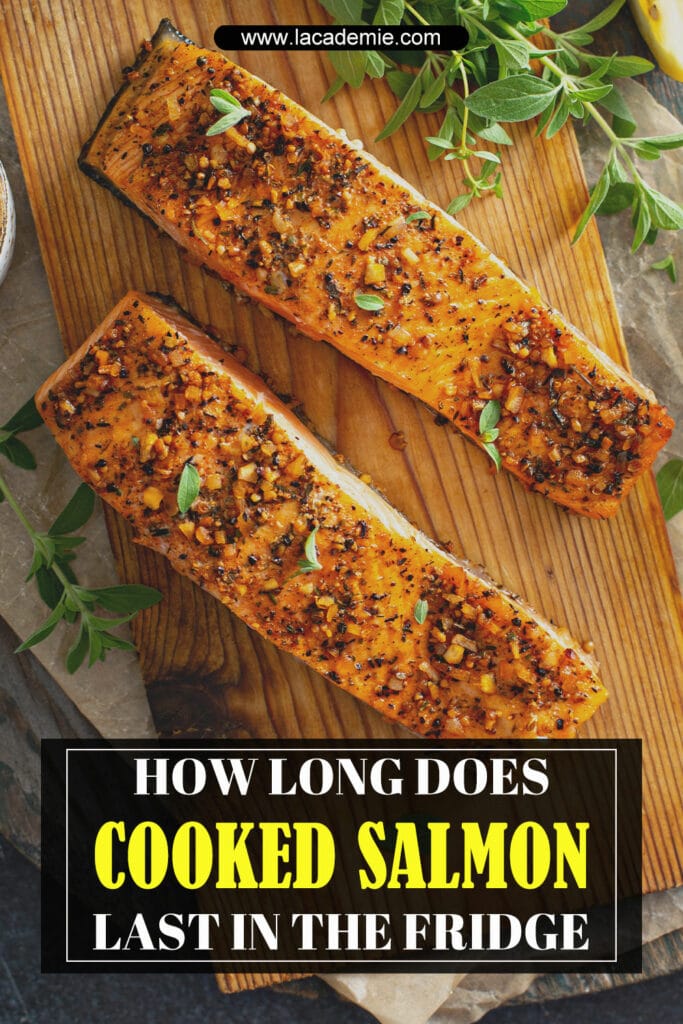
References
- Nchfp.uga.edu 2011. Food Storage for Safety and Quality. The University of Georgia Cooperative Extension.
- Fda.gov. 2021. Meat, Poultry & Seafood from Food Safety for Moms to Be.

